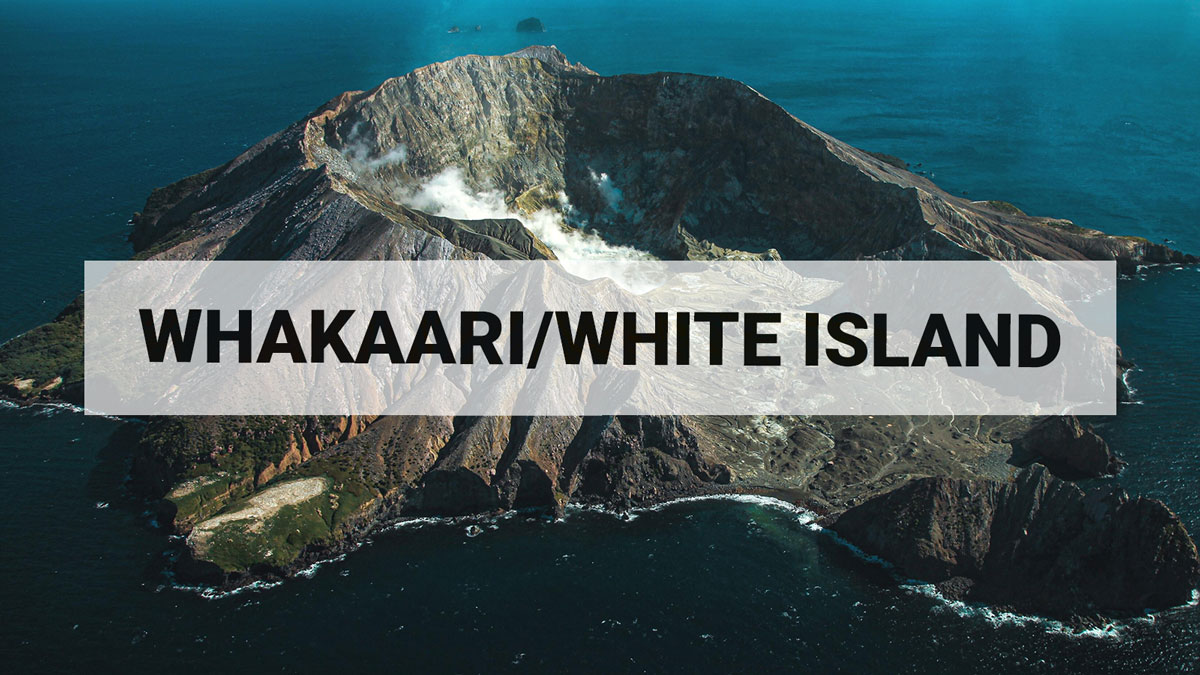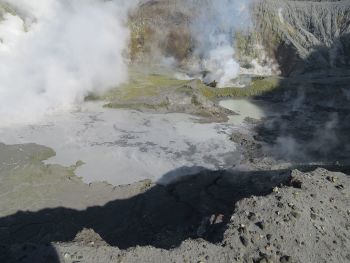
Volcanic Alert Bulletin WI-2013/13 - White Island Volcano
White Island volcano has remained at a persistent low level of activity, including volcanic tremor and degassing, for the past month.
No small mud or ash eruptions have been observed since earliest April. The lower level of activity has prompted GeoNet to reduce the Aviation Colour Code to Green (indicating no active eruption activity) from Yellow (indicating heightened unrest and eruptive activity). The Volcano Alert Level remains at 1.
Seismic tremor has continued within a range of low to moderate amplitude levels, while gas measurements continue to show a consistent magma degassing signature. Brad Scott, who visited the volcano last week, confirms “the rainfall over the past few weeks has caused a lake level increase and the two lakes have joined, creating one larger lake. Temperature of the lake is variable, with a maximum of about 62°C being measured. In contrast the nearby lava dome which was extruded in November has temperatures of about 200°C”.
As part of GeoNet's programme to improve monitoring at White Island the web camera on the crater rim has been upgraded. This provides clearer pictures and better low light (night) views. Camera images can be seen here http://www.geonet.org.nz/volcano/info/whiteisland.
Background The camera technology uses two cameras: One is a standard daylight camera and the other a special low light camera. The low light camera amplifies any ambient infrared source from various natural sources, allowing us to see better night images. It is not imaging heat but it amplifies low levels of ambient light that contain energy, so they appear as glows in the images. The camera isn't a thermal imaging camera. GeoNet has the same technology installed at other volcanoes.
Aviation Colour Codes are based on four colours and are intended for quick reference only in the international civil aviation community. The Volcanic Alert Level ranges from 0 to 5 and defines the current status at a volcano. Level 1 indicates signs of volcanic unrest.
Brad Scott Duty Volcanologist

